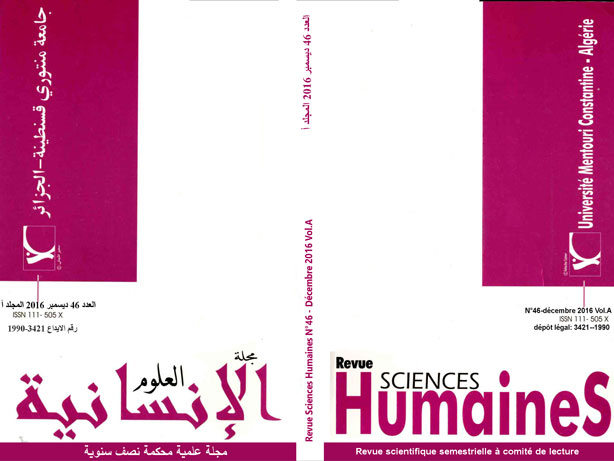The most Effective Speaking Classroom Activities at University of Constantine
Keywords:
Effective Speaking Classroom Activities, University, ConstantineAbstract
Speaking is one of the language skills to be developed in learning foreign languages. It is defined as the delivery of language via sounds and words and it is the key of oral communication. The literature has often cited difficulties in learning how to speak a foreign language fluently and accurately. Learning how to communicate needs intensive practice which is considered the main obstacle for learners since it requires appropriate conditions such as very small groups of students and enough time which is not the case at university of Constantine. Since adding extra hours for this module and decreasing the number of students per group seem to be beyond the realm of possibility, searching for new ways to improve communication is the right solution. The purpose of this paper then is to provide both teachers and learners of English with the most effective activities which can work with the prevailing conditions that are likely to enhance learners’ proficiency in speaking.Downloads
References
Baker, J. & Westrup, H. (2003). Essential speaking skills: A handbook for English language teachers. Continuum.
Bygate, M. (2009). Teaching the spoken foreign language. In K. Knapp & G. Antos (Eds.), Handbook of foreign language communication and learning. W DeG.
Chaudron, C. (1988). Second language classrooms: Research on teaching and learning. Cambridge University Press.
Duff, P. A. (2000). Repetition in foreign language classroom interaction. In J. K. Hall & L. S. Verplaetse (Eds.), Second and foreign language learning through classroom interaction (109-138). Lawrence Erlbaum Associates.
Farrel, T. S. C. & Jacobs, G. (2010). Essentials for successful English language teaching. Continuum for Successful Publishing Group.
Harmer, J. (2001). The practice of English language teaching. Pearson Education Limited.
Hedge, T. (2000). Teaching and knowing the language classroom. Oxford: Oxford University Press.
Larsen-Freeman, D. (2000). Techniques and principles in language teaching. Oxford: Oxford University Press.
Lindsay, C. & Knight, P. (2006). Learning and teaching English. New York: Oxford University Press.
Littlewood, W. (1981). Communicative language teaching: An introduction. Cambridge: Cambridge University Press.
McCarthy, M. (1998). Spoken language and applied linguistics. Cambridge: Cambridge University Press.
Purainen-Marsh, A., Alanen, R. & Finland, J. (2012). Repetition and imitation opportunities for learning. In N. M. Seel (Ed.), Encyclopedia of the science of learning. Springer.
Richards, J. & Rodgers, T. S. (1986). Approaches and methods in language teaching: A description and analysis. Cambridge: Cambridge University Press.
Rivers, W. M. (1971). Teaching foreign language skills. University of Chicago Press.
Spratt, M. (1991). The practice stage, discourse chains. In A. Matthews, M. Spratt & L. Dangerfield (Eds.), At the chalkface: Practical techniques in language teaching. Walton-on-thames, UK: Thomas Nelson.
Swain, M. & Suzuki, W. (2010). Interaction, output, and communicative language learning. In B. Spolsky & F. M. Hult (Eds.), The handbook of educational linguistics (pp. 558-570). Wiley-Blackwell.
VanPatten, B. & Williams, J. (Eds.). (2006). Theories in second language acquisition: An introduction. Lawrence Erlbaum Associates.
Wright, T. (1987). Roles of teachers and learners. Oxford University Press.

















